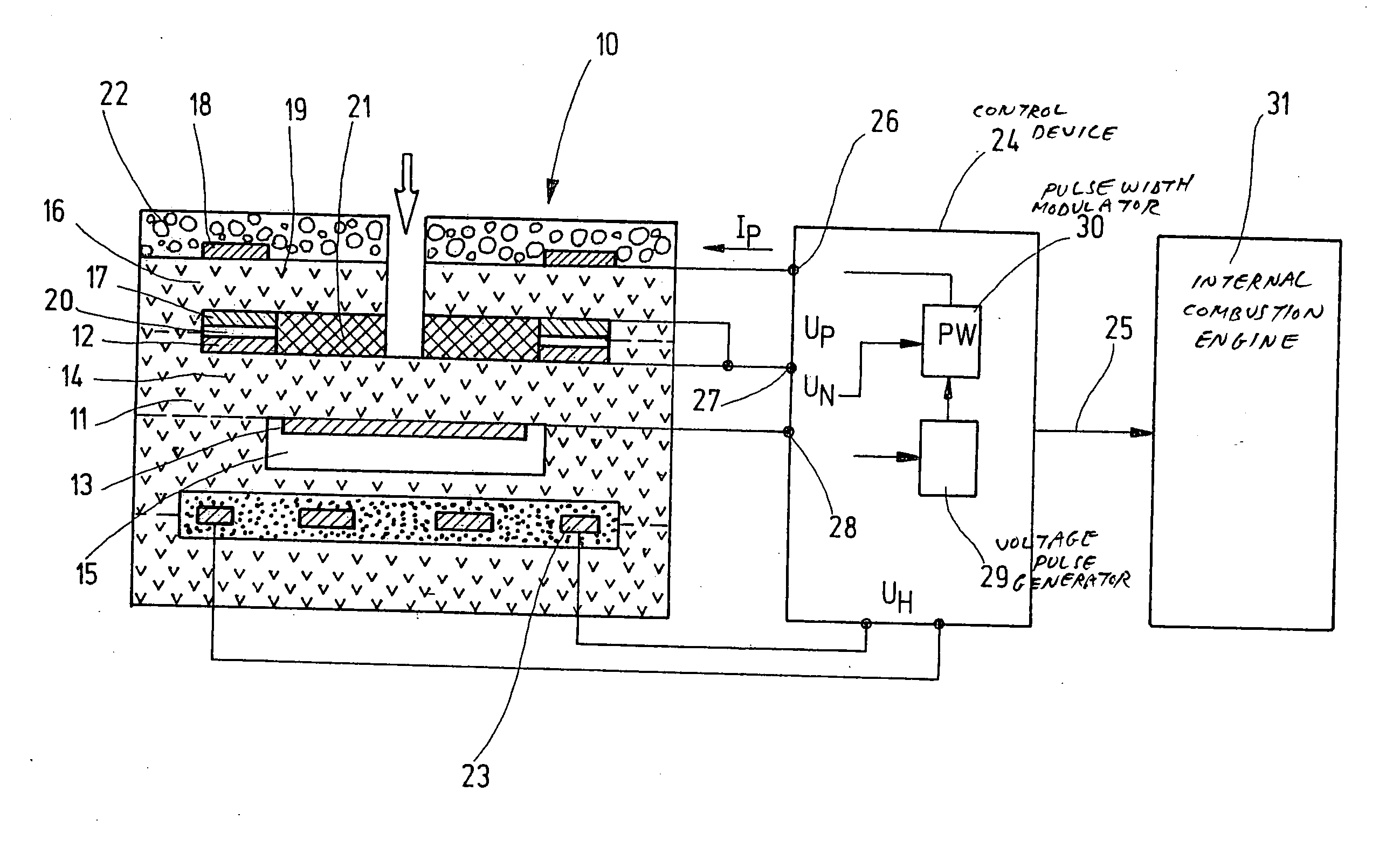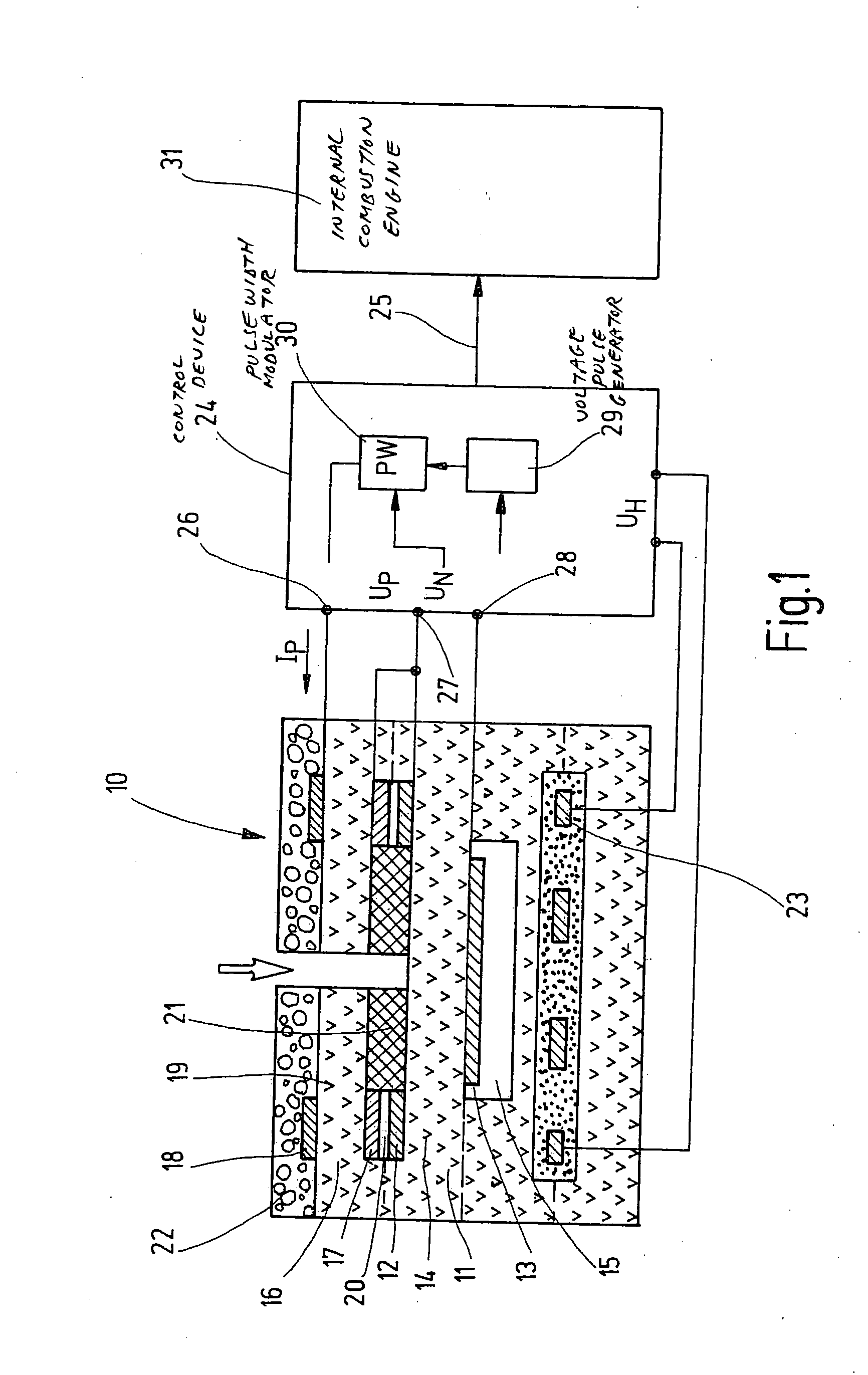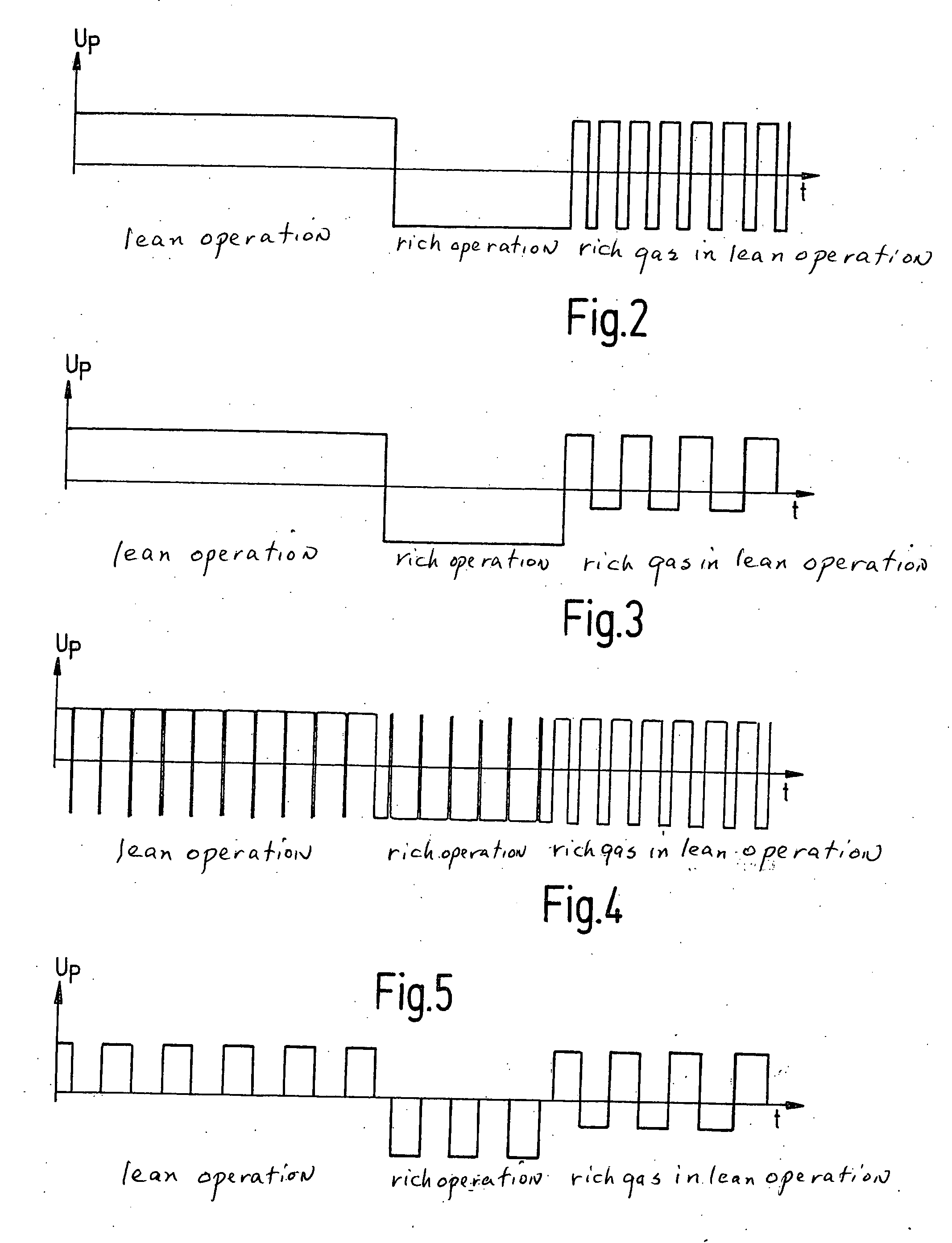Method for operating a broadband lambda probe
- Summary
- Abstract
- Description
- Claims
- Application Information
AI Technical Summary
Benefits of technology
Problems solved by technology
Method used
Image
Examples
Embodiment Construction
[0016] Broadband lambda sensor 10, shown in cross-section in FIG. 1, is used to determine the concentration of oxygen in the exhaust gases of internal combustion engines, in order to obtain a control signal for setting a fuel-air mixture with which the internal combustion engine is operated. Lambda sensor 10 has a measurement or Nernst cell 11 having a measurement electrode 12 and a reference electrode 13 that are situated on a solid electrolyte 14, as well as a pump cell 16 having an outer electrode 18 situated on solid electrolyte 19, which electrode 18 is also called an outer pump electrode, or OPE for short, and an inner electrode 17, also called the inner pump electrode (called IPN for short because it is at the same potential as the Nernst electrode), likewise situated on a solid electrolyte 19. As solid electrolytes 14, 19, a zirconium oxide stabilized with yttrium oxide is used, for example. Reference electrode 13 is situated in a reference canal 15 that is charged with a re...
PUM
 Login to View More
Login to View More Abstract
Description
Claims
Application Information
 Login to View More
Login to View More - R&D
- Intellectual Property
- Life Sciences
- Materials
- Tech Scout
- Unparalleled Data Quality
- Higher Quality Content
- 60% Fewer Hallucinations
Browse by: Latest US Patents, China's latest patents, Technical Efficacy Thesaurus, Application Domain, Technology Topic, Popular Technical Reports.
© 2025 PatSnap. All rights reserved.Legal|Privacy policy|Modern Slavery Act Transparency Statement|Sitemap|About US| Contact US: help@patsnap.com



